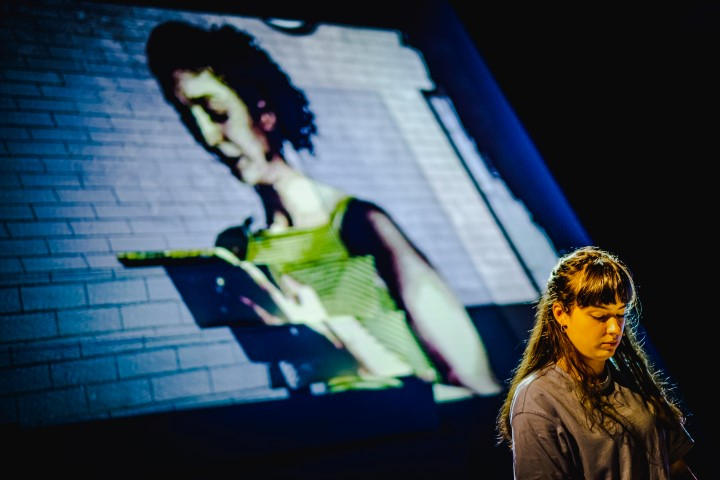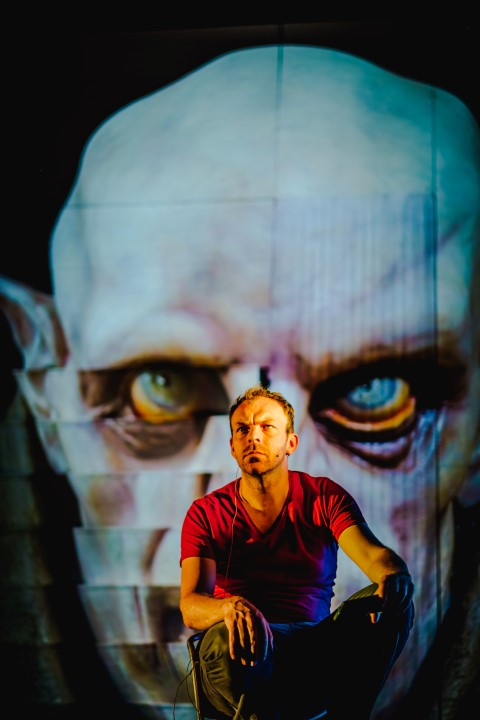Q&A WITH DIRECTOR ANDREW QUICK
You are halfway through your rehearsal process, how is it going?
AQ: Well, it’s been very challenging. We’re making the show at Leeds Playhouse –they are co-producers– and it’s been wonderful to work in the Courtyard Theatre space for 4 weeks but, like everywhere else in the UK we have been hit by Covid. Rehearsals have been affected by Track and Trace, there’s been much pinging. Plus, the fact that we have really been adhering to the 2-metre rule. Which sort of suits our graphic novel staging, but it’s limited the kinds of creative choices we can make on the stage.
Tell me a bit more about your attempt to stage this show like a graphic novel.
AQ: Graphic novels have always influenced our work. I suppose it’s the link between literature, art and cinema that attracts us. Also, the kind of story lines many of them follow. We’ve always been drawn to pulp narratives, detective, and sci-fi fictions, which all suit the graphic novel genre. In this show we have a large projection screen, a wall, onto which the actors’ image is thrown–by the digital technologies available to us. We use live camera feeds and face recognition technologies, and this screen operates just like the pages of the graphic novel. We even turn the pages for the audience. And we mix up spoken text with graphical representations of the text. But perhaps more importantly the whole piece is structured like a graphic novel. The story, our story, suits this form. It’s kind of fast and there’s lots of talking and then bursts of action. It’s pared down storytelling. I really like it. It’s brash and vivid and grabs the attention. It’s new for us but feels like a natural development from our previous work. I think it will be exciting for audiences. And this theatre suits the limitations that Covid-19 has forced on us. You can make images on stage separately and put them together on the screen, so they look intimate. Simon Wainwright our video designer and co-artistic director is great at this.

Is this a new kind of theatre then?
AQ: Well, we’re doing new things. I have not seen much like this before but there’s probably others in the world making work like this. It does develop out our experience of lockdown–how we made Airlock for the Culture in Quarantine Programme for the BBC, our shows, Night of the Living Dead-Remix and Heart of Darkness, both of which were affected by the pandemic – we cancelled parts of tours for both productions. One of things we’re trying out is mixing the digital and the non-digital.The screen is a wall with tricks in it – so it’s kind of like the page of the novel, which is two dimensional and then suddenly it goes three dimensional. I suppose this is the theatricality of the piece. Plus, you get a stage picture and action which in some ways is very different to the screen action. You see the piece stitched together before you. I don’t think we worry about being original, for us it’s always the search for the best way to tell the story. That’s what it always is for us. Solving the problem of how to tell the story. It’s the challenge of all theatre.
Let’s get to the story then. Yours is a new take on the Dracula narrative. Tell us about this.
AQ: Well, our story starts of in 1965–New Year’s Eve, when a woman walks into London police station claiming to be Mina Harker and admitting to a brutal murder that took place earlier that evening. So, she’s interviewed by two police officers who are naturally sceptical that she is Mina Harker because she’s in her twenties and Mina Harker would be at least 80. Oh, there’s an important bit of information missing here. Remember, this is a graphic novel. In the world of the graphic novel, Dracula is not a work of fiction. It’s an historical event. So, he existed in the historical world of our fictional reality. Anyhow, she tells her story across one evening and we find out what she did to Dracula in 1895 and what he did to her and the how the consequences of the events of that year have haunted the protagonists and affected the events of the intervening years.

So, it’s a new take on Dracula?
AQ: Yes, I think so. The original novel haunts our story, but we’re really interested in Mina Harker. In the original novel she’s the figure that puts all the elements of the story together and if you dig deep into the novel, you work out that she’s the real detective figure in that narrative. She’s the one that hunts down Dracula. And we work with that, and the politics of that as well. Mina was a modern woman, breaking the shackles that had previously held women back. In our version she frees herself from domesticity, she escapes married life and being a mother and continues to fight Dracula, to fight the evil in the world she believes is brought about by Dracula. I got really interested in this aspect of the story – how Dracula comes from an older idea of evil, a religious one maybe and how after Dracula, evil was no longer hiding in the shadows, it comes out into the open in the Twentieth Century and we must deal with it in a different way. The piece deals with these themes, but hopefully in playful way. Of course, it’s always hard to be playful with the idea of evil but the graphic novel helps us here. Graphic novels, a bit like super-hero movies can deal with these big ideas in brash and playful ways. I think we capture the spirit of this.
You seem to be implying that the piece is feminist in its perspective. How easy is this, given you are three male directors controlling/working on the piece.
AQ: You must be vigilant and aware of the dynamics in the room. You have to be aware that you make many assumptions and write and imagine from multiple perspectives. One of the problems is that the form/genre is dominated by men – the graphic novel, I mean. So, you’re dealing with a form that is often made or feels like it’s made for men. So even with a female protagonist, like we have here, you must be careful not to make her too much like a typical female super-hero. And then we have the original novel, which positions women in a particular way. So, we are negotiating all these dynamics. And then the piece is set in 1965 – at a particular historical moment. All I can say is that we think about these things, but you know people will say because three men kind of direct the work then it’s very male. Maybe it is – but you know I don’t really know what that means any more. I would never say something is very female – it feels like a strange thing to say. Theatre is a collaborative form and there are multiple voices in the room and there is an openness to our rehearsal process that allows these voices to have resonance. This is a long answer to your question. I wouldn’t say it’s a feminist piece, but I would hope feminism haunts the text and the staging in complex ways. It’s Mina’s story – how she makes her way in a male world. It’s sort of how that world destroys her. But she fights and within the story I admire her fighting spirit. But that also sounds like a typical male response. See, I can’t win.

You keep alluding to the fact that this piece links to previous works – can you expand on this?
AQ: Yes. I think both Heart of Darkness and Night of the Living Dead-Remix, were looking at evil in the world. Conrad’s novel is a kind of interrogation of a particular manifestation of evil and Living Dead looks at the ordinary evil that people do in order to survive–rather than working together they tear each other apart. For Romero, the director of the original film, the baddies are the humans. The zombies do what they do–without ethics or morality. Our take on Dracula returns to these concerns in a very different way and in a very different style but there is a link. The question I suppose we are looking at is what do you do to put a stop to evil and if you take direct action as it were, do you become the monster you are fighting against? But I am making it sound heavy, which it really isn’t. It’s playful and I think funny. Yes, there’s gore and violence – it’s about Dracula! But there’s more going on as well and I hope the ideas we are exploring are picked up by the audiences. I am really looking forward to seeing how they respond.
Again, you have alluded to the effects of Covid 19 on the process. Will the piece be seen as product of the pandemic?
AQ: It depends on what’s happening in September. It’s definitely a product of the conditions of Covid 19 – we have had to make it very carefully. But if everything is back to normal when we tour the piece might look a little strange – we keep to the 2-metre rule at the moment, for example. Pete Brooks who I work with and who mainly focuses on the scenic elements, the stage action, has worked hard to get the most out of the situation. I think if people are interested in how this piece is like alive graphic novel, then it will really grab your attention. The way we have made this work and limitations imposed on us suit this form and we have worked so hard to create something very dynamic on the stage from the rules we have been forced to work within. You know, sometimes limitations are useful in framing what you do. In the case I think it works for us. But I have to say this, don’t I?

Dracula: The Untold Story will be at the Playhouse Tue 12 Oct to Sat 16 Oct. Tickets £10 - £35.
Posted in PLAYHOUSE